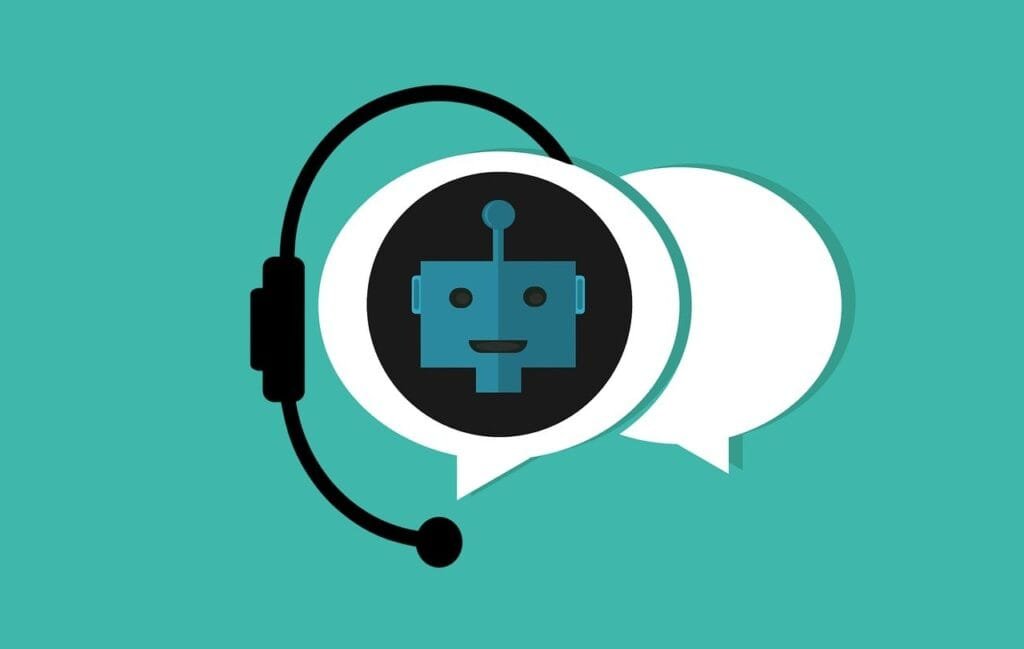Getting clicks on your digital campaigns is exciting. You see numbers rising and think, “This is working!” But then, reality sets in: clicks alone don’t pay the bills. For mid-sized companies, converting those clicks into sales—or genuine leads—is the ultimate goal. Yet, bridging the gap between initial engagement and real ROI can feel like a challenge.
In this article, we’ll break down practical steps for transforming clicks into conversions. We’ll talk about why the gap exists in the first place and provide strategies that mid-sized businesses can use to turn those digital interactions into meaningful results.
1. The Click-to-Conversion Conundrum: Why the Gap Exists
It’s easy to get clicks, but it’s much harder to turn those clicks into paying customers. A lot of the time, this gap exists because the journey from awareness to purchase is disjointed. The person clicking on your ad may be interested, but that doesn’t mean they’re ready to buy. Sometimes, it’s an issue of trust; other times, it’s a lack of information.
For mid-sized companies, resources are often spread thin, and the focus may be on getting more clicks rather than refining the journey. So, while you’re seeing high click-through rates, you’re not getting a significant return on investment (ROI) if those clicks aren’t translating into sales.
Action Insight: The first step in bridging this gap is to understand your customer’s journey fully. Look beyond the click and dive into what happens after. Map out each step that customers need to take to become buyers. Are there unnecessary barriers? Are you giving them a reason to take the next step? Start here, because you need to see the full picture to improve it.
2. Building the Right Foundation: Define Your Conversion Goals Clearly
Clicks can mean a lot of things: website visits, content views, or product page views. But if you don’t have a defined conversion goal, those clicks won’t be guiding potential customers anywhere specific. Is your goal to gather emails, schedule a demo, or get direct purchases? A vague call-to-action (CTA) or poorly defined conversion goal is one of the main reasons people click but don’t convert.
To turn clicks into valuable actions, you need to define what “conversion” means for each campaign. Whether it’s filling out a form, signing up for a newsletter, or completing a purchase, the goal should be crystal clear and consistent from the ad to the landing page.
Action Insight: Before launching any campaign, make sure you have a specific, measurable conversion goal. Define one primary action and make it the focus. For example, if you’re promoting a free trial, your CTA and landing page should revolve around that action only, not other distractions.
3. Crafting Effective Landing Pages: Where Clicks Turn Into Conversions
Your landing page is where clicks become conversions. Unfortunately, it’s easy to lose potential customers at this point. A high bounce rate on landing pages often signals that the page isn’t meeting visitors’ expectations, is difficult to navigate, or lacks a clear message.
The ideal landing page is direct, with minimal distractions. It should address the user’s needs immediately, echoing the ad they clicked on. Include trust elements, like testimonials or ratings, and make sure the CTA is prominent and easy to engage with.
Action Insight: Test your landing pages. Run A/B tests with different headlines, CTAs, and layouts. Keep an eye on bounce rates and completion rates to see what’s working and adjust your design or messaging to make it as intuitive as possible.

4. Personalizing the Journey with Targeted Messaging
In digital marketing, one-size-fits-all doesn’t work, especially for mid-sized companies with a defined target audience. Personalization can make a massive difference in bridging the gap from click to conversion. Today’s consumers expect a personalized experience, whether it’s an ad that speaks to their needs or a landing page that addresses their specific concerns.
Using data from user behavior, such as browsing history, location, or interests, allows you to create more relevant, compelling messaging. Dynamic content on landing pages can also help; for instance, if a user arrives from an ad for a specific product, the landing page should feature that product prominently.
Action Insight: Invest in personalization tools that allow you to adjust messaging based on user data. For example, if someone clicks on an ad for “affordable winter jackets,” make sure the landing page speaks to affordability and winter apparel. The more relevant your message, the easier it is to keep them engaged.
5. Building Trust with Clear and Honest Communication
Trust is critical when it comes to converting clicks. People are more likely to purchase if they feel they can trust your brand. Mid-sized companies often struggle here because they may lack the brand recognition of larger businesses. The solution? Make transparency a priority.
Use trust signals like customer testimonials, industry certifications, or clear policies (returns, shipping) on your landing pages. Avoid over-promising; instead, communicate honestly and focus on delivering genuine value. People appreciate brands that are upfront and truthful.
Action Insight: Add a few testimonials from satisfied customers and clearly display trust badges on landing pages. If you’re asking for an email sign-up, explain why you’re asking and what they’ll get in return. This small level of transparency can significantly boost conversions.
6. Using Retargeting to Re-engage Potential Converters
Sometimes people click on your ad, visit your site, and leave without converting. It doesn’t mean they’re not interested; it just means they weren’t ready yet. This is where retargeting comes in. Retargeting lets you show follow-up ads to people who have previously clicked or visited your website, nudging them back to complete the action.
With retargeting, you can bring visitors back with personalized messages, such as a reminder about the item they viewed or an incentive like free shipping or a discount. Mid-sized companies often see significant ROI improvements with retargeting because it keeps the brand top-of-mind for people who have already shown interest.
Action Insight: Set up retargeting campaigns for each major action on your site. For example, if someone visited your product page but didn’t buy, show them ads featuring that product, maybe with an added incentive. Track these campaigns carefully and experiment with different messages to see what resonates best.
7. Optimizing the Checkout Process for Seamless Conversions
For eCommerce businesses, the checkout process is a crucial step in converting clicks to actual sales. An overly complicated checkout is a common reason for cart abandonment. Mid-sized companies should focus on streamlining this process as much as possible.
Elements like guest checkout, easy payment options, and minimal form fields make it easier for people to complete their purchase. Small improvements here—like adding Apple Pay, Google Pay, or a progress bar showing how close they are to completion—can make a big difference in conversion rates.
Action Insight: Conduct a usability audit of your checkout process. Are there unnecessary steps? Is it easy to navigate on mobile? Try shortening forms, allowing autofill, and including multiple payment options to ensure a smooth, hassle-free experience.

8. Tracking the Right Metrics: Focus on Quality Over Quantity
Clicks are easy to measure, but not all clicks are valuable. Mid-sized companies should focus on quality metrics that reveal more about engagement and conversion potential. Rather than obsessing over click-through rates (CTR), focus on metrics that show depth, like time on page, bounce rate, and conversion rate by source.
Metrics like cost per acquisition (CPA) and customer lifetime value (CLTV) give a more accurate picture of ROI than clicks alone. By focusing on metrics that matter, you can optimize your campaigns based on what’s driving actual value rather than just high traffic.
Action Insight: Set up your analytics to track the entire user journey, from click to conversion. Use UTM parameters to trace clicks back to specific campaigns and track which channels drive the highest-quality traffic. This lets you focus your budget on efforts that deliver real results.
9. Nurturing Leads with Email Campaigns
Not every click will lead to an immediate sale, but that doesn’t mean they’re not valuable leads. Email nurturing campaigns can be highly effective for mid-sized companies looking to maintain engagement with potential customers.
A well-timed email, like a reminder about a left-behind cart or a follow-up offering more details about a product, keeps you on their radar. With nurture campaigns, you’re building trust and gradually moving people closer to conversion.
Action Insight: Create email sequences for different types of leads. For instance, send a friendly follow-up email to users who visited your site but didn’t convert, offering additional information or an incentive to encourage them back.
10. Continuous Optimization and Iteration: Small Changes, Big Results
Digital marketing is never “set and forget.” To bridge the ROI gap, you need to regularly test and refine your campaigns. Small changes—like adjusting an ad headline, refining a CTA, or updating a landing page—can have a large impact over time. With a continuous improvement mindset, you can gradually bring more of those clicks closer to conversion.
A/B testing is your friend here. Testing multiple ad variants or landing page designs can reveal what drives the best results. The trick is to make data-driven adjustments rather than guessing.
Action Insight: Use A/B testing platforms to try different ad formats, copy, and landing page designs. Keep a record of what you’ve tested, and measure results to understand which changes work best. Continuous optimization is about learning from data to create smarter, more effective campaigns.

Related: Check out our free SEO suite

11. Creating a Compelling Post-Conversion Experience
Once a user converts, whether by making a purchase or signing up, the journey shouldn’t end there. Many companies make the mistake of focusing solely on that first conversion and neglect the post-conversion experience. A compelling post-conversion strategy can not only increase repeat business but also turn satisfied customers into brand advocates.
For mid-sized companies, every loyal customer is an asset. Follow up on purchases with personalized emails, thank-you notes, or exclusive offers. Send valuable information on product care, related product suggestions, or loyalty rewards to make customers feel valued and engaged. This can increase the customer lifetime value (CLTV) and help your brand stand out in a competitive market.
Action Insight: Develop a post-conversion email sequence that nurtures new customers, encourages reviews, and promotes relevant products. Ensure the sequence feels personal and helpful rather than sales-driven. Showing genuine appreciation can go a long way in building a lasting relationship with your customers.
12. Leveraging Social Proof to Influence Future Conversions
Social proof—like testimonials, user-generated content, and case studies—is a powerful motivator for potential customers. People want to feel confident about their choices, and seeing others have positive experiences with your brand helps bridge that confidence gap.
Mid-sized companies can benefit immensely from showcasing authentic customer stories. Gather reviews, feature customer photos on social media, and integrate success stories into your campaigns. This social validation can nudge those who are on the fence to finally convert, knowing they’re making a trusted choice.
Action Insight: Incorporate social proof into your landing pages, ads, and emails. A quick testimonial on an ad or a photo of a happy customer on a product page can make your brand feel more reliable. The goal is to remind potential customers that real people love your product, which can tip the scales in your favor.

13. Emphasizing Mobile Optimization to Capture On-the-Go Conversions
In today’s mobile-first world, a large portion of clicks comes from users on mobile devices. However, many mid-sized businesses overlook mobile optimization, leading to missed conversion opportunities. Mobile users expect fast-loading pages, easy navigation, and simple payment options. If the mobile experience is clunky or slow, potential customers may abandon the process, costing you conversions.
Mobile optimization is more than just responsive design; it includes ensuring every element, from buttons to images, is perfectly suited to smaller screens. A seamless mobile experience can make the difference between someone clicking away or completing a conversion.
Action Insight: Test your entire funnel on mobile devices, from the ad click to the checkout process. Ensure that pages load quickly, CTAs are prominent, and forms are easy to fill out. Regularly check your mobile performance metrics, like bounce rate and conversion rate, to see where improvements might be needed.
14. Creating a Sense of Urgency to Drive Immediate Action
Sometimes, users need a little nudge to convert right away. One effective way to do this is by creating a sense of urgency. Limited-time offers, low-stock notices, or countdown timers can encourage users to take action before it’s too late. For mid-sized companies, urgency can be especially helpful in cutting through the noise and prompting clicks to turn into conversions sooner rather than later.
Be careful, though; creating false urgency can hurt your credibility. Instead, be honest and transparent. For example, you could mention that a discount is ending soon, that a product is selling out fast, or that limited spots are available.
Action Insight: Use urgency sparingly but strategically. Place urgency cues on product pages, in email campaigns, and on checkout pages when appropriate. Track how these cues impact conversions to ensure they’re adding value without feeling forced.
15. Aligning Sales and Marketing Teams for a Unified Conversion Strategy
For mid-sized companies, aligning sales and marketing efforts can be a game-changer in maximizing conversions. Often, marketing focuses on driving clicks and traffic, while sales zeroes in on closing leads. But when these teams work in silos, potential conversions slip through the cracks. A seamless transition from marketing to sales can ensure that leads receive consistent, nurturing communication throughout their journey.
Collaborate to create a strategy where marketing generates high-quality leads, while sales follows up with tailored messages and solutions. This partnership can drastically reduce drop-off rates and create a smoother path to conversion.
Action Insight: Hold regular meetings between sales and marketing to discuss lead quality, conversion challenges, and opportunities. Develop shared KPIs, such as conversion rate from MQLs (marketing-qualified leads) to SQLs (sales-qualified leads), to keep both teams focused on the same goal: turning interest into commitment.

16. Implementing Chat Support for Real-Time Engagement
In today’s fast-paced world, people often need immediate answers before committing to a purchase. Offering live chat or chatbot support on your site allows visitors to ask questions, clarify doubts, and receive support in real time, making it easier for them to proceed with their conversion. For mid-sized companies, chat support can provide a level of customer care that feels personal without requiring a large customer service team.
Chat support also provides valuable insights into common customer questions, allowing you to identify friction points in the conversion process. By addressing these areas proactively, you can create a smoother, more customer-focused experience.
Action Insight: Set up chat support on key pages, like your product and checkout pages. Analyze chat transcripts to see what’s stopping customers from converting and make adjustments based on this feedback. Proactive, helpful support can make a big difference in converting hesitant leads.
17. Conducting Regular Conversion Audits for Continuous Improvement
No matter how effective your initial strategy is, digital marketing requires constant fine-tuning. Conducting a conversion audit allows you to review the entire journey periodically, identifying areas where clicks aren’t translating into conversions. This could be a landing page that isn’t performing well, an ad with a high bounce rate, or a checkout process that’s too complicated.
A conversion audit takes a closer look at each step, allowing you to find and fix small issues that may be silently sabotaging your conversions. Audits provide valuable insights and help keep your strategy fresh and aligned with your customers’ evolving needs.
Action Insight: Schedule a quarterly conversion audit. Analyze metrics like bounce rates, exit pages, conversion rates by channel, and customer feedback. Make iterative improvements based on your findings, always looking for small adjustments that could enhance the journey and boost ROI.
Closing the Gap: Turning Clicks Into Sustainable Conversions
For mid-sized companies, turning clicks into conversions is the real key to unlocking ROI. The journey from initial interest to final sale might have obstacles, but every tweak, test, and optimization you make can bridge that gap more effectively. By focusing on the entire customer experience, from the moment they click to the final conversion, you build a journey that isn’t just transactional—it’s transformational.
Remember, bridging the ROI gap isn’t about single, dramatic changes. Instead, it’s the cumulative effect of aligning each part of the customer journey to meet their needs, answer their questions, and encourage trust. The strategies we’ve covered—from personalizing content and simplifying checkout to fostering post-purchase engagement—are designed to make each click count.
As you implement these steps, you’ll begin to see your marketing efforts bring in not only higher conversions but also loyal customers who contribute to long-term growth. Start today by analyzing your current journey, making small adjustments, and watching as each click moves you closer to a more profitable, ROI-focused future.
READ NEXT:
- Best Digital Marketing Agency In Los Angeles, California
- Best Digital Marketing Agency In San Jose, California
- Best Digital Marketing Agency In Stockton, California
- Best Digital Marketing Agency In Oakland, California
- Best Digital Marketing Agency In Santa Ana, California
- Best Digital Marketing Agency In San Francisco, California






















Comments are closed.